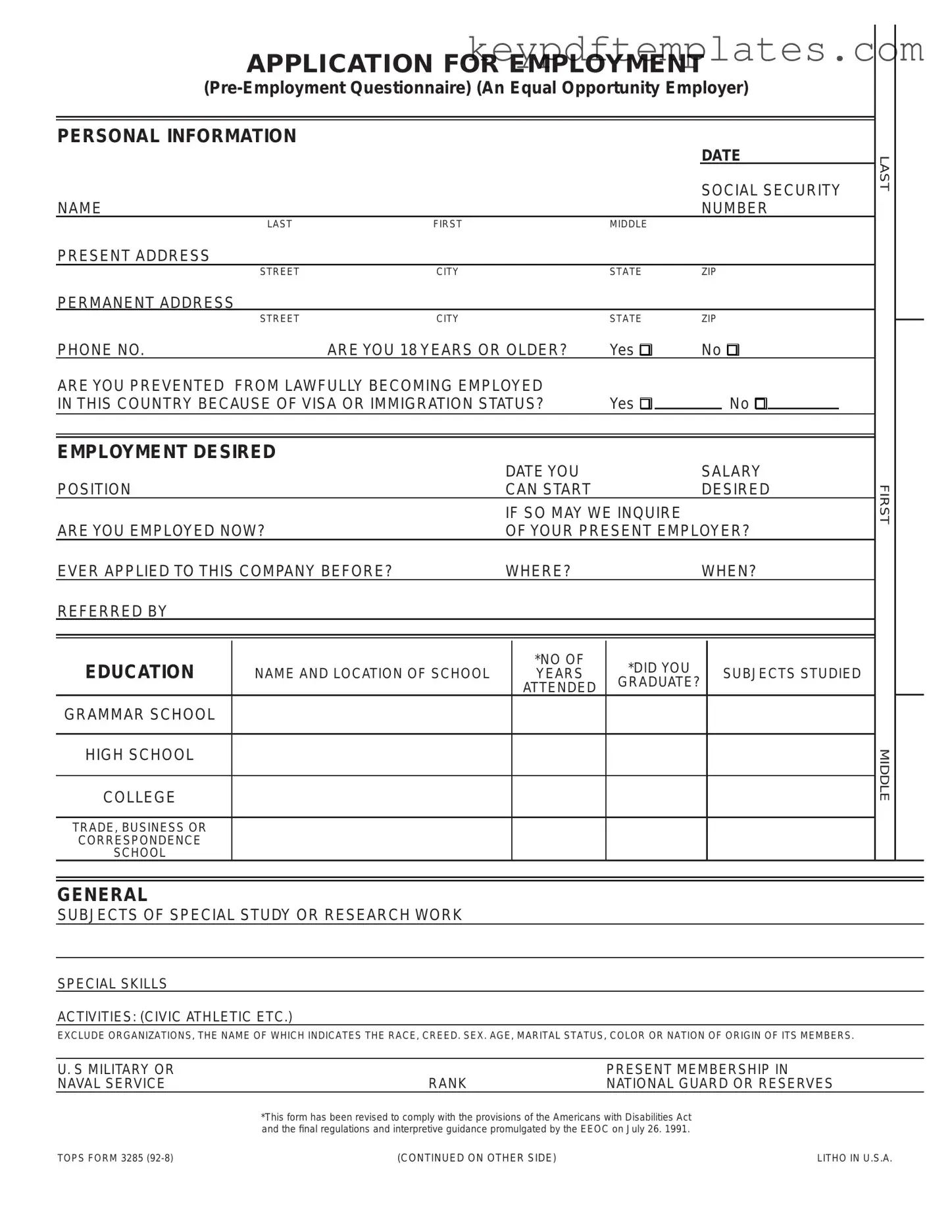Get Employment Application Pdf Form
The Employment Application PDF form is a standardized document used by employers to collect information from job applicants. This form typically includes sections for personal details, work history, education, and references. By providing a clear format, it helps streamline the hiring process for both employers and candidates.
Modify Document Online
